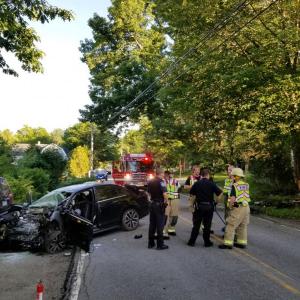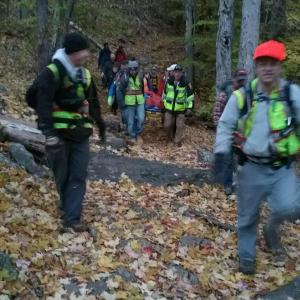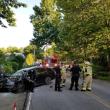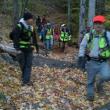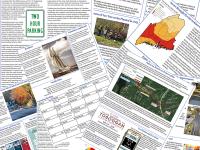Camden Fire Department to increase its emergency medicine skills
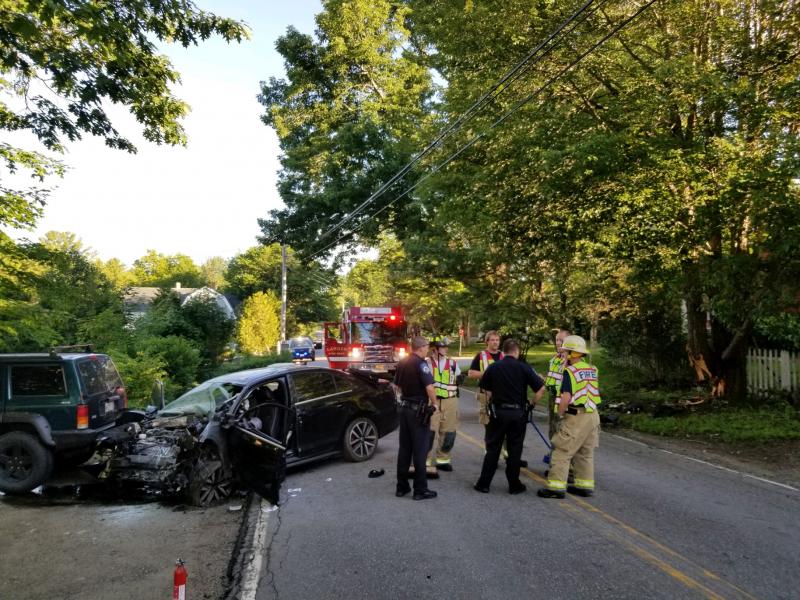 A Summer 2019 crash on John Street in Camden drew the response of the fire department and an ambulance crew. (Photo courtesy Camden Fire Department)
A Summer 2019 crash on John Street in Camden drew the response of the fire department and an ambulance crew. (Photo courtesy Camden Fire Department)
 Camden firefighters hike several times a year into Camden Hills State Park to help injured hikers on the trails. (Photo courtesy Camden Fire Department)
Camden firefighters hike several times a year into Camden Hills State Park to help injured hikers on the trails. (Photo courtesy Camden Fire Department)
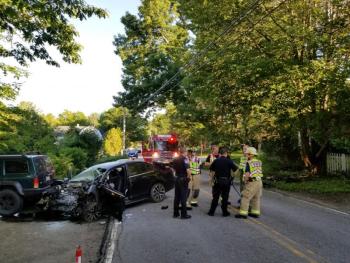 A Summer 2019 crash on John Street in Camden drew the response of the fire department and an ambulance crew. (Photo courtesy Camden Fire Department)
A Summer 2019 crash on John Street in Camden drew the response of the fire department and an ambulance crew. (Photo courtesy Camden Fire Department)
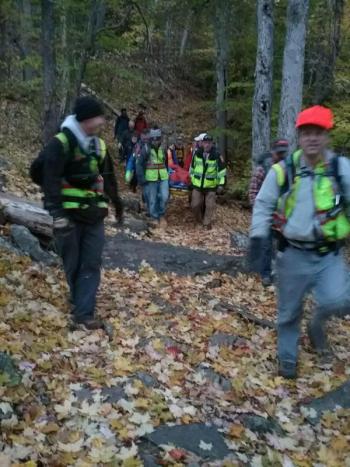 Camden firefighters hike several times a year into Camden Hills State Park to help injured hikers on the trails. (Photo courtesy Camden Fire Department)
Camden firefighters hike several times a year into Camden Hills State Park to help injured hikers on the trails. (Photo courtesy Camden Fire Department)
CAMDEN — With endorsement from the Camden Select Board, at least eight of the town’s firefighters will be spending the winter and spring learning how to assess trauma injuries and administer emergency medical care, skills that will only benefit the community at large, board members agreed.
Camden Fire Chief Chris Farley introduced the proposal to send firefighters to a basic EMT course beginning in January when he appeared before the Select Board Nov. 6, at a regularly scheduled meeting held in the John French Room. (See the meeting’s live stream archive here.)
He circulated a memo prior to the meeting so the board was acquainted with how interested firefighters would be trained in order to render aid to victims at accidents, fires, on the sides of mountains, and other emergencies to which first responders are called.
Equipped with Emergency Medical Training Level B, they are to assist the medically distressed, to their licensed capacity. They would also be able to assist North East Mobile Health Services when those ambulance crews arrive at the scene.
“When firefighters show up on scene, they will be able to do more medical intervention than they are able to do now,” said Camden Town Manager Audra Caler-Bell.
Currently, Camden Fire Department as a unit does not have license to provide emergency medicine at crashes and other incidents; however, the department does have some paramedics who are firefighters. If the situation called for it, those paramedics could individually render aid, to their license capacity. (Learn more about the different levels of EMS responders at Maine EMS)
Many of the firefighters do not have emergency medical responder or emergency medical technician training, except having taken classes in CPR and very basic first aid.
With a cadre of trained EMTs, however, Camden Fire Department could be licensed by the state as a nontransporting first responder agency. That would allow firefighters who completed the 200 hours of training this winter and spring to help individuals in medical distress.
“When citizens call 911 they are expecting a well trained person to show up to help them,” said Camden Select Board member Marc Ratner, who supported the proposal. “That’s worth the extra money.”
The cost of training the firefighters is free, and would be accomplished at Midcoast School of Technology, which will be providing the space to Kennebec Valley Community College. The latter received a grant to teach the EMT-B class beginning in January, at the Rockland campus, according to Farley.
The classes would convene twice a week in the evening, and on at least three Saturdays until the course ends in May.
Operational costs to Camden would be the payroll insurance, which is estimated to be $9,000 to $12,000 a year, according to Farley.
And, the town would need to purchase first aid supplies.
When meeting with the Select Board, Farley noted that the fire department had been asked to expand its role for code enforcement and building inspections three years ago, and responded with appropriate training.
There was relatively minimal impact to the fire department and the budget, he said.
“EMT services will have greater impact on personnel and budget,” he said. “I think it is important for you all to discuss that.”
He said that with the former ambulance service, Camden First Aid, which folded its nonprofit organization after North East Mobile Health Services acquired the contract to provide emergency medical services and transport to Camden, Hope, Lincolnville and Rockport six years ago, “used to have first responders in community.”
He said that it was “something we talked about with North East, but didn’t really gain traction. Farley added that it has come back on table and is, “something we need to talk about.”
Select Board Chairman Bob Falciani said the costs to the town are marginal.
But when board member Taylor Benzie asked for clarification about equipment, which includes the possible purchase of a new EMS response vehicle, Falciani said, “I thought this was about training personnel.”
Caler-Bell said the equipment is secondary.
“I read that as a downstream thing,” said Falciani, about Farley’s proposal to purchase a new vehicle to first respond to medical calls.
He wrote in his memo: “Our thought is to go with a mini-pumper, which is a heavy duty four door pickup with a fire pump on it. This is a multi-purpose vehicle which allows it to be used for medical calls as well as for fire incidents down narrow roads and in other hard to reach places. Although this will most likely be the highest cost, by selling three vehicles that are underutilized in the Fire Department, we can offset the vehicle’s cost and building modifications that will be needed.”
The board conversation then turned to appeal of offering EMT training to firefighters, so that they become that much more of an asset, the board agreed.
Farley pointed out that fire service is changing and the days of having 65 volunteer firefighters on the rolls are gone.
“What is the interest level,” Falciani asked Farley, concerning whether Camden firefighters wanted to learn EMT skills.
“There is some interest there,” Farley responded.
It represents a career path, said Caler-Bell. There are not enough EMTs and paramedics, she said, and providing training, “gives people more of an option for a career path.”
The immediate reality for a nontransporting first responder agency is, “to get there first and start rendering care before the ambulance and paramedic arrives.”
And it is not just injuries and crises that compel people to seek help from the fire department. On at least two occasions, people have stopped at the Camden Fire Department calling for help to deliver a baby, said Farley.
Expanding emergency medical training to firefighters, “will lead to payoffs in the speed and quality of emergency medical care to our citizens,” he said.
Camden Fire Department’s Emergency First Response Proposal
The following is from a memo sent to Camden Town Manager Audra Caler-Bell from Camden Fire Chief Chris Farley:
What Does it Mean to Have the Camden Fire Department First Respond to EMS Calls?
It means that Camden will have more licensed personnel on-scene during the most critical medical emergencies and a greater chance that trained personnel will get to patients more quickly.
Our ambulance service comes out of Rockport (by ‘Fresh off the Farm’), and they also cover the communities of Rockport, Hope and Lincolnville. This means that it could take considerable time for them to get to Camden if they are at their station, or for a mutual aid ambulance to arrive if North East is busy.
With firefighters on-shift from 7 a.m.-7 p.m. in Camden, and on-call firefighters around, by first responding we should have a better chance of arriving on-scene and starting care more quickly.
When Would we Respond?
Working with Atlantic Partners EMS and North East, we would develop a written policy to provide guidance as to when we would respond to EMS incidents.
Currently, our thoughts are that we would respond when the dispatch code is Delta or Echo.
A dispatch code is a determinate given by the emergency dispatcher that tells the responding units the level of care needed and extent of the emergency. They range from Alpha to Echo. Alpha, Bravo and Charlie are the least emergent dispatch codes.
Delta and Echo are the most urgent, indicating severe injury or imminent death- necessitating an immediate response.
What Education Would we Need?
In order to first respond, we can be licensed to the Emergency Medical Responder (EMR) level. This is the most basic level in the EMS system, with the order from least to most complex being: EMR, EMT-Basic, Advanced EMT and Paramedic. An EMR licensed individual can perform basic functions with minimal equipment. Although this is the minimum we would need, we would like to be educated to the EMT-Basic level. This gives us a better understanding of human physiology, a few more skills (like giving oxygen) and allows us to work more effectively with an ambulance when they arrive.
What do we Need to Make This Happen?
There are several things that we need to make this happen:
EMT-Btraining.
EMT-B equipment. E.g. bandages, oxygen, AED, etc. *Some of this we already have, but would need spares to replenish used resources.
EMS Provider’s Insurance.
4. New vehicle to use as main EMS response vehicle.
What About Costs?
There are costs associated with emergency first response, but you’ll find there are ways to lessen the cost to make it more worthwhile:
A. Training costs are minimal. There is an EMT-B class available this January at MCST that is free except for books and registration. Personnel will be paid for class time, making up most of the cost. Even with this, the cost to the Town will be minor. Ongoing training and recertification will have to occur over time but is not a major cost.
B. As stated above, we have much of the EMT-B equipment that will be needed. However, there will be a small cost in getting spare supplies to replenish what we use on-scene.
C. Personnel costs will increase. Licensed personnel will be able to respond to more calls, thereby increasing the amount of hours/overtime they incur. This will necessitate an increase in personnel costs.
D. There will be added insurance that the Town will need to provide. Google comes up with the cost around $9,000-12,000 a year.
E. As seen above, we will need to purchase a new vehicle to first respond to medical calls. Our thought is to go with a mini-pumper, which is a heavy duty four door pickup with a fire pump on it. This is a multi-purpose vehicle which allows it to be used for medical calls as well as for fire incidents down narrow roads and in other hard to reach places. Although this will most likely be the highest cost, by selling 3 vehicles that are underutilized in the Fire Department, we can offset the vehicle’s cost and building modifications that will be needed.
F. As vehicles get used more it could run up vehicle maintenance. This shouldn’t be a large expense, just more frequent maintenance.
Conclusions
In the process of this conversation, we want to make the Select Board aware that if they are making a policy decision to expand the role of the Fire Department into the Emergency Medical Services arena, there will be impacts on personnel. As well, due to the increase in call volume, there will be a corresponding budgetary increase. As stated by The Principles of Emergency Medical Dispatch, Third Edition, “time can make a difference in life-threatening situations, so there is little time leeway; emergency crews must arrive at the scene as quickly as possible” (pg. 3.33). With a large geographic region to cover and only one EMS station, time isn’t always on our side.
It is important that we have medical personnel arrive and provide care as quickly as possible during life-threatening emergencies. These responders need to be trained and equipped to provide this first response. By making these changes we help to ensure Citizen’s peace of mind knowing that they will have quick, quality care when they need it the most.
Reach Editorial Director Lynda Clancy at lyndaclancy@penbaypilot.com; 207-706-6657
Event Date
Address
United States

